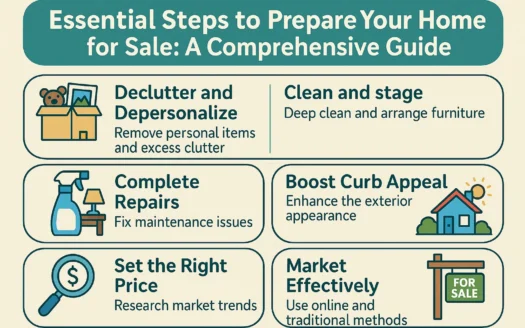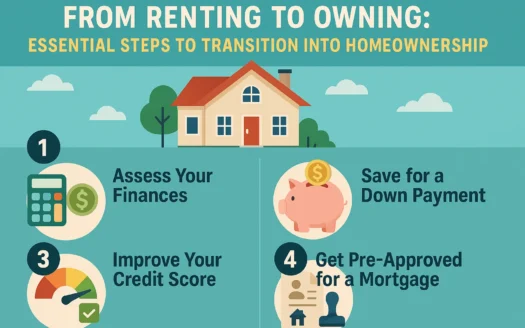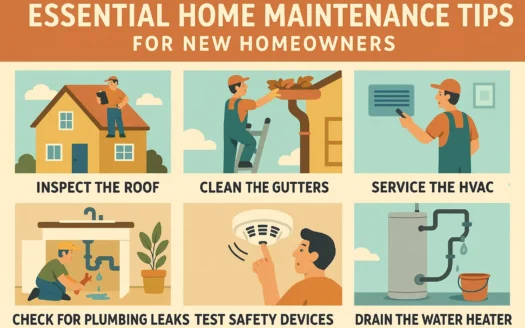You Have an Agent, You’ve Whipped Your House into Dream-Home Shape and Your Carefully Crafted Listing Is Live. Now It’s Time to Turn “For Sale” into “SOLD”

You Have an Agent, You’ve Whipped Your House into Dream-Home Shape and Your Carefully Crafted Listing Is Live. Now It’s Time to Turn “For Sale” into “SOLD”
There are so many intricacies involved in the home-selling process after your home goes on the market and before you seal the deal. We’re talking negotiations, appraisals — and let’s not forget about the mountain of paperwork. Here’s a step-by-step look at what to expect in the final stages of the home-selling process.
Prepare Your Home
You’ve already cleaned and staged your home for professional photos to accompany your listing, but now you’ll need to stage your home again to prepare for in-person showings and virtual tours. Visitors will open kitchen cupboards, walk through each room, and scrutinize every angle. Consider hiring a professional stager if you’ve already moved out — their furniture and design pieces can elevate your home’s appeal. The goal? Help buyers picture themselves living a beautiful life in your space.
Show Your Home
If you’re still living there, maintain flexibility for showings. Coordinate with your agent to ensure you, family members, and pets are absent during viewings. Reset your home before each visit: hide personal items, re-stage rooms, and avoid lingering cooking smells. Options include:
- Scheduling appointments-only viewings for better preparation.
- Providing a lockbox or keypad for impromptu access (but reset the home each time you leave).
Discuss hosting an open house with your agent to maximize exposure.
Field Offers and Negotiate With Buyers
Offers may include price, closing dates, and contingencies like home inspections. Evaluate bids carefully:
- The highest offer isn’t always the best — watch for contingencies (e.g., dependent on the buyer selling their current home).
- Use a “kick-out clause” to keep showing the home if an offer has too many caveats.
- Counter lowball offers to spark negotiations.
No offers? Reassess pricing, staging, or timing with your agent.
Open Escrow and Hire a Title Company
After accepting an offer, your agent opens escrow. A title company manages:
- Escrow accounts (securing funds until closing).
- Title reports (confirming legal ownership).
- Paperwork like grant deeds and state-specific forms.
Resolve title issues with a real estate attorney if needed. Buyers submit a deposit to escrow, which is applied to closing costs.
Get Your Home Appraised
Buyers typically require an appraisal to secure financing. The appraiser evaluates:
- Home condition and location.
- Sales of comparable homes (“comps”).
If the appraisal is low, renegotiate or let the buyer walk, depending on contract contingencies.
Get Ready for the Home Inspection
Buyers often request an inspection within 10 days of escrow. Prepare by addressing known issues (e.g., from a pre-listing inspection). The inspector checks:
- Structural integrity, plumbing, electrical systems.
- Pest infestations (e.g., termites).
Provide seller disclosures (e.g., lead paint for pre-1978 homes) for the buyer to acknowledge.
Negotiate on Repairs and Get the Home Move-in Ready
Use inspection results to negotiate repairs:
- Offer closing cost credits for major fixes.
- Compromise to avoid losing the sale.
Once agreed, ensure the home is empty, clean, and utilities/HOA fees are settled before the final walkthrough.
Sign the Title and Close Escrow
At closing, both parties sign documents to transfer ownership. Key steps include:
- Paying off your mortgage and transaction costs.
- Handing over keys, garage codes, and mail access.
- Signing deeds, loan papers, and tax documents.
Funds are disbursed, and the sale is filed with local records. Congratulations — your home is sold!




